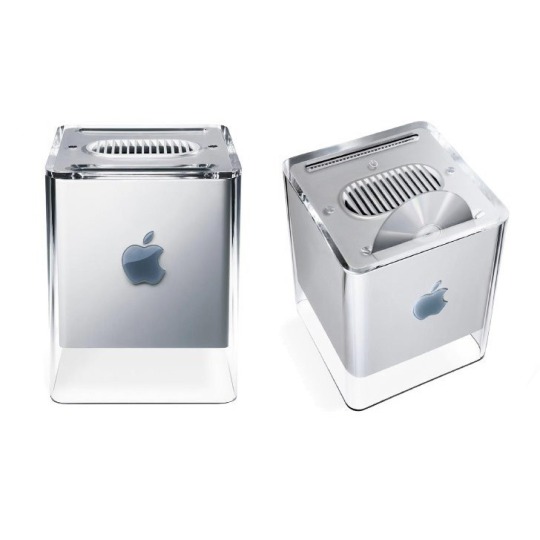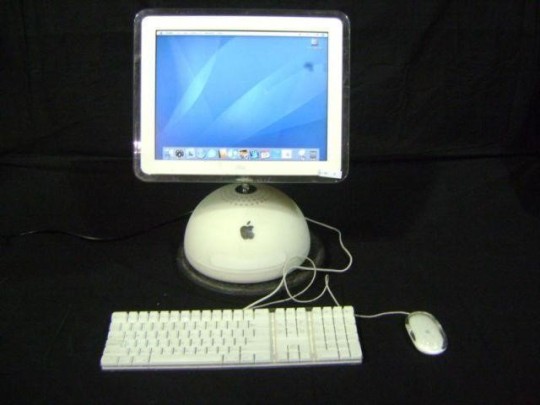#Key commands to open disk utility for mac powerbook
Explore tagged Tumblr posts
Text
Key commands to open disk utility for mac powerbook

Key commands to open disk utility for mac powerbook how to#
Key commands to open disk utility for mac powerbook mac os x#
Key commands to open disk utility for mac powerbook mac os#
When a Macintosh is powered-up or Restarted ('booted'), various pieces of Mac ROM and System software examine the keyboard, and take special actions if certain keys are held down. Then you can use our video and the pictures below to disassemble the drive and recover your CD. Mac startup keys This document is obsolete: Please consult Magical Macintosh Key Sequences by Dave Polaschek.
Key commands to open disk utility for mac powerbook how to#
You can use our other mac repair videos to determine how to remove the drive from your machine. You still can recover your cd, however you’ll have to open your machine and remove the drive to do it. If none of these methods work, your drive is likely defective and needs to be replaced. Pick your favorite way to eject disk volumes from your Mac and put an end to the Disk Not Ejected Properly warnings. At this stage, you can hit the eject button on your keyboard to eject the cd. 5 ways to eject an external drive from a Mac.
Key commands to open disk utility for mac powerbook mac os#
Click the Format pop-up menu, choose Mac OS Extended, provide a name, and then click Erase. Select your startup disk on the left side of the screen, and then click Erase. Select Disk Utility, and then click Continue.
Key commands to open disk utility for mac powerbook mac os x#
This will put you in the disk selection window. d - Force the internal hard disk to be the startup device n - Hold down until Mac logo, will attempt to boot from network server (using BOOTP or TFTP) r - Force PowerBooks to reset the screen t. As the Mac restarts, hold down the Command and R keys until the Mac OS X Utilities window appears. This will force an eject.Ħ.) Hold down the option key while the machine is starting up. (You can also use the keyboard shortcut Command-E)Ģ.) Drag the disc to the Eject icon on the dock.ģ.) Open disk Utility (In the Utilities folder in the Applications folder.) Click on the drive, and then click Eject CD in the application window.Ĥ.) Open up Terminal (Again, you’ll find this in the Utilities folder in the Applications folder) and type “drutil tray eject”ĥ.) On a Macbook, Macbook Pro, Powerbook, or iBook, hold down the trackpad clicker while the machine boots up. When booted into Recovery, the machine is running from a separate partition, which allows the disk to be erased. The software offers a number of hard drive management functions. This text will be replaced Summary and Photos: The Duh Methodsġ.) Go to file menu and choose the eject cd option. A: Answer: A: Yes, if your Mac boots from the hard disk as normal and you launch Disk Utility from there, it won't let you erase the disk because that's what it's running from. Disk Utility is a hard disk management application that comes with the Mac operating system.

0 notes
Text
Mac Os For Powerpc G4

The level of Mac OS 9/Classic support for each PowerPC G3, G4, and G5-based Mac is listed below. For complete specs on a particular system, click on the name of the Mac (left column). For all Macs that match a specific Mac OS 9 compatibility - courtesy of EveryMac.com's Ultimate Mac Sort - click the compatibility of interest (right column). It started out on PowerPC processors but later transitioned onto Intel processors with Mac OS X Leopard (10.5) the last to natively support the PowerPC architecture and Snow Leopard (10.6) the last to support PowerPC applications on Intel-based Macs. All versions of Mac OS X that were made to run on PowerPC systems (with the exception of. G4's above 1GHz tend to be USB 2.0 late model G4 Macs that are only able to run Mac OS 9 in Classic Mode from an OS X installed system (unless user modified). I think that one exception to that rule is the G4 Mirrored Drive Doors (2003) 1.25GHz FireWire 400 model. The Power Mac G4 is a series of personal computers designed, manufactured, and sold by Apple Computer, Inc. From 1999 to 2004 as part of the Power Macintosh line. Built around the PowerPC G4 series of microprocessors, the Power Mac G4 was marketed by Apple as the first 'personal supercomputers', reaching speeds of 4 to 20 gigaFLOPS.
Hello everybody ! Many people have some old apple computers laying around in their attic or somewhere else, and probably, one day, decide to try and revive them. If you are one of those people with a G3, G4 or G5 Mac, and don’t want to bother yourself with trying to find old installer CDs, I will show you how you can install Mac OS 10.3 (not tested), 10.4 and 10.5 on your PowerPC from a USB stick. Now you may think that you already can do that by just holding the Alt key, but these machines are a bit too old for that. Thats why we gotta force them, through Open Firmware Mode !
Things you´ll need:
A PowerPC Mac with a G3, G4 or G5 processor
A modern intel Mac
A 4gb or larger (8gb recommended) USB stick
A copy of Mac OS 10.3, 10.4 or 10.5
A tiny bit of patience !
Panther minimal requirements: 233mhz G3 processor and 128mb of RAM
Tiger minimal requirements: 300mhz G3 processor and 256mb of RAM
Leopard minimal requirements: 867mhz G4 processor and 512mb of RAM
Here are the download links to Mac OS 10.3, 10.4 and 10.5:
10.3: https://winworldpc.com/product/mac-os-x/103 (10.3 is in 3 separate parts and is very difficult to install from USB. You should better burn 3 CDs with the files.)
10.4: https://drive.google.com/file/d/0Byhts_pMay1hUnRlS1M4WDBLd28/view
10.5: https://drive.google.com/file/d/0Byhts_pMay1hWHdyOWhGd1Vkdnc/view
So, to start off, download the version of your choice. I would recommend first trying 10.4, because it is compatible with more Macs. Once you downloaded Tiger (the name of Mac OS 10.4). You want to plug your USB stick into your intel Mac, open Disk Utility, and format it as Apple Partition Map with the name USB. Once done, restore your stick from the Tiger dmg. You may need to scan the image, for that, whilst in disk utility, go into ‘images’ and select the top option. After the restoring process is done, right click on your usb in disk utility (left side, where every disk is shown) and look for its partition number. Could be 3,2,1 and so on. Now you can eject your usb, and plug it into your PowerPC. Make sure that it is the only USB device, except for your keyboard and mouse. Now comes the fun part 🙂


Congrats ! You’ve made it until here ! Hopefully without any problems. But that was the easiest part; now starts the more difficult part, if you don’t know what you’re doing. First things first, to start your Mac into OF mode, you need to turn it on, and immediately hold ‘command’, ‘Alt’, O and F all together. Hold those 4 keys down, until you see the screen shown above. After you successfully booted your Mac, you gonna wanna type ‘dev / ls’ and hit enter. Now there will be a long list of all the stuff inside of your computer. At the end of the list you will most likely see something like ‘More (space, cr,q) and so on. Just press space once. Now at the end there should be ‘0’ with an arrow and underscore. Before typing any other stuff, you will have to find your usb in the list. It should be towards the end and look something like this:

Your USB will be /usb@xx (here usb@18) and below there should be /disk@xx (here disk@1). Are you ready to type now ? Alright then, let’s go !! ( Tip: press the up key to prevent rewriting everything )
After each line press Enter
/pci@f2000000/usb@xx/disk@xx
devalias ud /pci@f2000000/usb@xx/disk@xx
dir ud:x, (instead of x write the partition number of your usb)
If everything went right, there now should be a list of the stuff that’s on your usb. Now type:
boot ud:x,SystemLibraryCoreServicesBootX
If you typed everything like shown, your Mac should now happily boot from the USB ! You can now continue without me, and install OS X on your old machine, assuming it has enough RAM, and is compatible with your Mac ! If you encounter any issues, or something is unclear, just comment down below, write me a DM on instagram @idevice_collector or email me: [email protected]. I hope you enjoyed this tutorial, and we will see us in the next one !
-Gohro

0 0 likes 8,575 views Last modified Aug 17, 2012 9:08 AM
You can't upgrade any PowerMac past Mac OS X 10.5.8. That means Mac OS X 10.6 Snow Leopard, 10.7 Lion, and 10.8 Mountain Lion will not work with any PowerMac.
PowerMacs with PowerPC 601 to 604 processors can all be upgraded to Mac OS 9.1, except certain Performa/Powermac 54xx/55xx/63xx/64xx machines which were limited to Mac OS 7.5.5 where X can be any number.
PowerMac G3s with a Beige case could be upgraded to Mac OS X 10.2.8. Some may require a firmware to be installed before upgrading past 10.1.5 to 10.2 or later. A third party XPostFacto software expanded some of these machine's upgrade options.
PowerMac G3s with a Blue and White case, and PowerMac G4 PCI could be upgraded to Mac OS X 10.4.11, however, could not boot externally via Firewire, nor USB any version of Mac OS X. An internal drive solution is needed to boot the installer disc of any Mac OS X. Some may require a firmware to be installed before upgrading past 10.1.5 to 10.2 or later.
Powermac G4 with up to dual 800 Mhz processor were limited by Apple to Mac OS X 10.4.11, though third party software known as LeopardAssist could force Mac OS X 10.5 to 10.5.8 to be able to be used on some of those Macs. Note with Mac OS X 10.5, Classic is gone. If your PowerMac supported booting into Mac OS 9, it would continue to be able to do so after upgrading to 10.5 as long as the Mac OS 9 drivers were left installed.
Mac Os 9 Powermac G4
Powermac G4 with 867 Mhz, 1 Ghz and higher, and G5 machines could all be updated to 10.5.8. The PowerMac G5 is not to be confused with the Mac Pro, the user tip on upgrading to Snow Leopard explains how to tell them apart.
Mac Os For Powerpc G4 Drivers
Mac Os For Powerbook G4
This user tip explains additional upgrade options.

0 notes